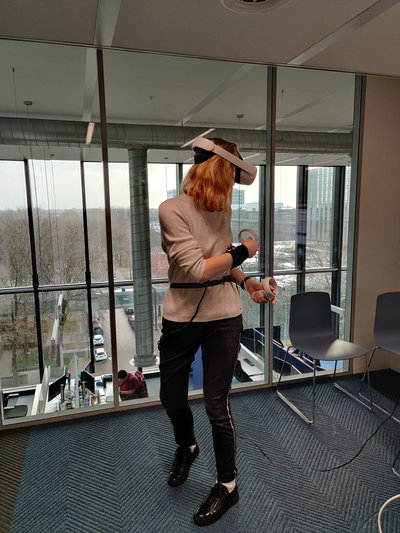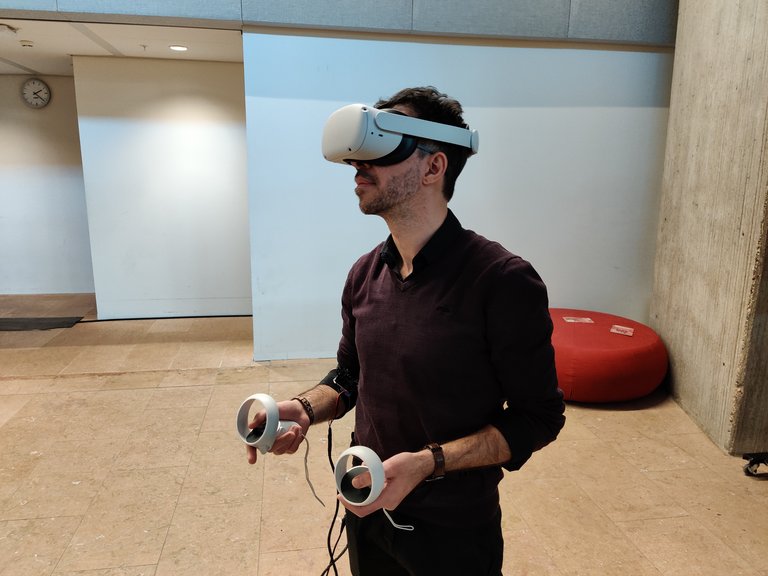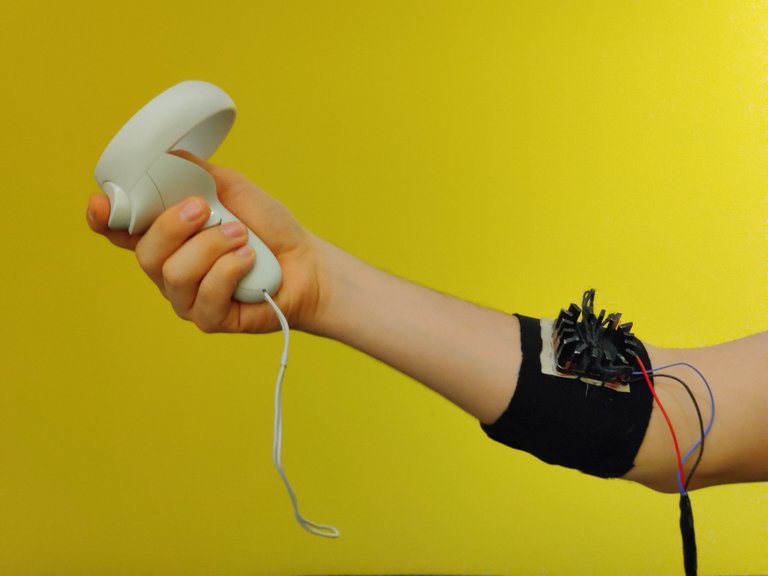I find myself at the edge of a virtual forest clearing, looking around. In the distance I see an avatar who is speaking to me; that's where I need to go. As I get closer, I can hear the person better; he is talking about how we should take better care of the earth. Beforehand, I was instructed to stand near the avatar, at a distance where I feel comfortable. I choose my spot and listen for a moment, then I confirm my position and find myself back again at the edge of the clearing to meet the next avatar. This way, I am sent into the virtual world twenty-four times in total.
But not every time is the same. Occasionally, as I approach the avatar, I feel the wristband with sensors on my forearm warming up. Sometimes I feel vibrations in the controller in my hand, or warmth and vibrations, and sometimes nothing at all. After each session, I answer questions in the virtual world on what I felt and how I experienced this encounter.

Simulated heartbeat
Now that virtual worlds are becoming more detailed and VR headsets are improving, efforts are being made to make the experience more realistic. This aligns with the study of Simone Ooms, where participants visit a virtual forest. "What can you add besides 'seeing' and 'hearing'? That quickly leads to the sense of 'feeling'. In an earlier study, I asked people to watch news videos on the computer while their arm rested on a device. Then, I had them feel warmth and vibrations through that device - that's what we call haptic feedback. Just that alone adds an extra dimension. Now, I'm doing the same in VR. I want to know how a simulated heartbeat and mimicked body warmth influence the virtual experience."
"In the real world, a significant part of communication is non-verbal. You can, so to speak, tell from someone's gait whether they're happy or not. You don't have that in VR. That's why we're trying to add elements to convey that non-verbal aspect," explains Ooms. "Do people, for instance, link a simulated heartbeat to a certain emotion?"
Adding a sense of feeling to the virtual experience is being researched worldwide in various ways. Researchers often engage in tinkering for this purpose. Experiments have been conducted with tubes sewn into clothing, through which you can make cold and warm liquids flow, Ooms notes. "They've come quite far with that. Now, the tubes are filled mixes of cold and warm water to achieve precise temperature feedback."


